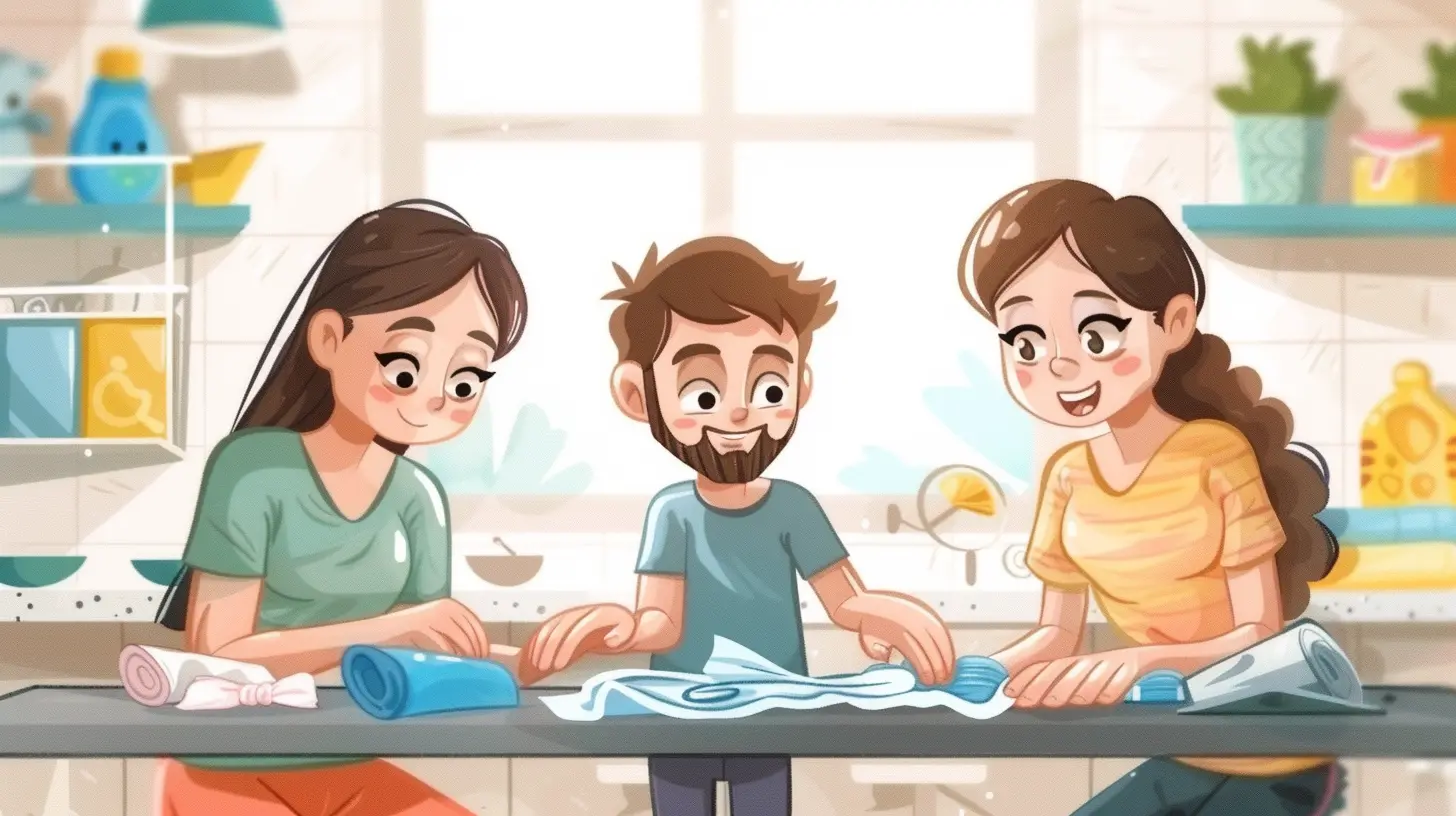7 April 2025
Ah, chores—the never-ending saga of who’s going to do what and when. Sound familiar? If you’re tired of the endless tug-of-war over dishes left in the sink or clothes piling up like Mount Laundry, you’ve landed in the right place. Family chore routines can feel like herding cats, but trust me, it doesn’t have to be that way. With a little planning and a pinch of teamwork, you can turn household chaos into a well-oiled routine that actually gets stuff done.
Let’s dive into some practical ways to turn your family into a chore-busting, mess-tackling dream team. 
Why Chore Routines Are the Secret Sauce to Sanity
Let’s face it: no one loves chores. But they’re a necessary evil if you want a clean home and some semblance of order in life. Without a plan, it’s easy for things to spiral out of control—crumbs on the floor, dishes in the sink, and toys everywhere. You’ve been there, right?Having a chore routine isn’t just about keeping the house clean; it’s about teaching responsibility, teamwork, and accountability. Plus, when everyone pitches in, it lightens the load for everyone. And who doesn’t want that? 
Step 1: Start with a Family Meeting
Before you dive into chore charts and schedules, sit down as a family. Seriously, grab some snacks and have an honest conversation. Why? Because people—especially kids—are more likely to follow through when they feel like they’re part of the plan.Here’s how to make that meeting productive:
- Discuss expectations: Be clear about what needs to be done around the house.
- Let everyone pick their battles: Give family members a say in which chores they’d prefer. (Trust me, avoiding World War III over who vacuums is worth it.)
- Set a tone of teamwork: Remind everyone that it’s about working together, not keeping score. 
Step 2: Break It Down by Age and Ability
Now, not all chores are created equal, right? Asking a 4-year-old to scrub the bathroom isn’t exactly a winning strategy (unless you enjoy a soap-and-water disaster). Matching chores to age and ability is key.Here’s a quick cheat sheet:
- Toddlers (2-4 years): Picking up toys, putting dirty clothes in the hamper, wiping surfaces with a damp cloth.
- Younger kids (5-7 years): Setting the table, dusting, feeding pets.
- Older kids (8-12 years): Vacuuming, folding laundry, taking out the trash.
- Teens (13+ years): Mowing the lawn, cleaning bathrooms, cooking simple meals.
Pro tip: Make it fun for the little ones. Turning clean-up time into a game or playing their favorite playlist can work wonders. 
Step 3: Make Chore Charts Your Best Friend
Ah, the chore chart—the ultimate tool for keeping everyone on track. It doesn’t have to be a fancy Pinterest-worthy creation (though kudos to you if it is). A simple whiteboard or printable chart will do just fine.Here’s how to make it work:
- Keep it visible: Hang the chart somewhere the whole family can see it, like the fridge or a common area.
- Be consistent: Assign chores for specific days and stick to it. “Oh, I forgot” won’t fly when it’s written in black and white.
- Use rewards wisely: Incentives can be great, but be careful not to turn chores into a full-blown bribery system. Something small, like extra screen time or a favorite dessert, can go a long way.
Step 4: Embrace the Power of Teamwork
You know what they say: teamwork makes the dream work. When everyone tackles chores together, it not only gets done faster, but it also builds a sense of camaraderie.For example, instead of everyone scattering off to do their own thing, designate a “family clean-up hour” once or twice a week. Put on some upbeat music, set a timer, and see how much you can accomplish together. (Spoiler alert: It’s usually a lot.)
Step 5: Make It a Habit
Here’s the thing about routines—they only work if they’re, well, routine. It might take a few weeks to get into the groove, but consistency is your best friend here.Some tips for keeping the momentum:
- Be patient: Habits take time. Expect some hiccups in the beginning.
- Lead by example: Kids are like little sponges; they’ll follow your lead. If you tackle your chores with a positive attitude, they’re more likely to do the same.
- Celebrate progress: Did everyone stick to the routine for the week? High-fives all around!
Common Pitfalls (And How to Avoid Them)
Even the best-laid plans can go off the rails. Here are a few common stumbling blocks and how to dodge them:- The “I’m Too Busy” Excuse: Life gets hectic, and skipping chores is tempting. But remember, skipping once can quickly snowball into skipping forever.
- Perfection Paralysis: Don’t expect every chore to be done perfectly, especially with kids. The goal is effort, not perfection.
- Overloading the Chart: Keep the number of daily chores manageable. No one wants to feel like they’re working a second job.
Add Some Fun to the Mix
Who says chores have to be boring? Adding an element of fun can transform them from a dreaded task to something (almost) enjoyable.- Turn on some tunes: A little music can make even scrubbing the bathroom bearable.
- Make it a competition: See who can fold laundry the fastest or clean up their room the best.
- Surprise incentives: Occasionally throw in an unexpected reward, like a family movie night, when everyone stays on track.
The Bigger Picture: Life Lessons from Chores
The truth is, chore routines aren’t just about keeping the house clean. They’re about teaching life skills. Kids learn responsibility, time management, and the value of hard work. And as much as they might roll their eyes now, they’ll thank you when they’re living on their own (and not drowning in dirty dishes).Plus, a family that works together stays together. Tackling chores as a team strengthens bonds and creates a sense of unity. And at the end of the day, isn’t that what family is all about?
Wrapping It Up
Creating family chore routines that actually get things done isn’t rocket science, but it does take some effort. From holding a family meeting to setting up chore charts to making it a team effort, these tips can turn chaos into calm.Remember, the goal isn’t a spotless house—it’s a happy home where everyone pitches in and feels valued. So grab that whiteboard, assign those chores, and get the whole family on board. You’ve got this!





Aelith McIntosh
“Together we thrive, turning tasks into treasured moments.”
April 17, 2025 at 2:22 AM